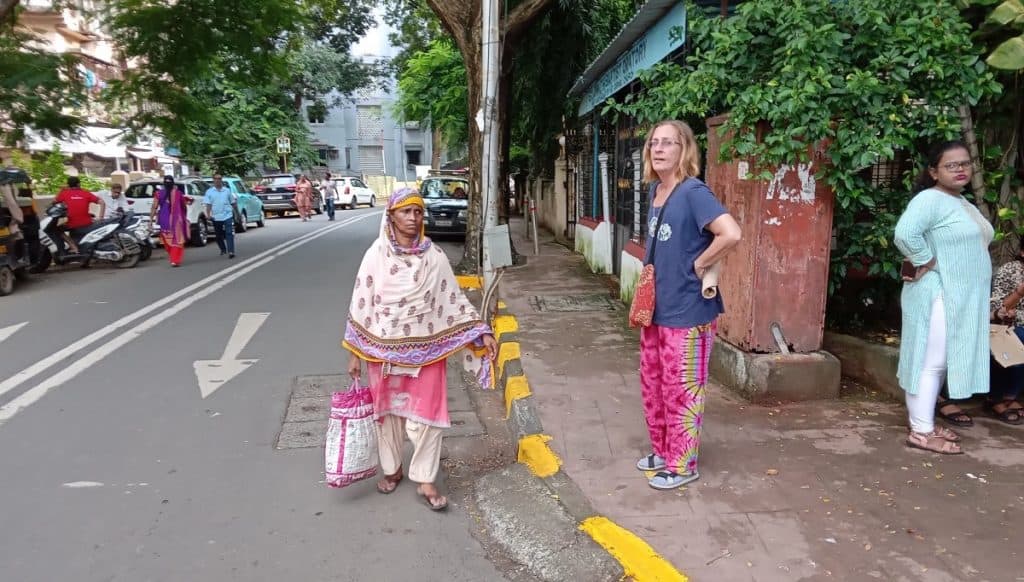Last Updated on October 25, 2024 by Ellen
I am awestruck over contradictions in Mumbai. Every city on the planet has disparities. But in Mumbai, the contradictions are so ‘in your face’, they are so extreme, that you can’t let them enter your heart (too much) or you’ll never survive.
Each day, my husband Theo and I encountered beggars. It is difficult to say no. Especially to older people, and to women with babies. Like the woman pictured below.
One evening she approached our Uber car with a baby and a boy. The baby wore bangle bracelets, and knocked them onto the window by Theo’s head. Metal on glass – much more jarring than a knuckle rap.
“OK,” Theo said. “You win. You have a baby…” He rolled down the window and gave her change – the equivalent of about 50 cents.
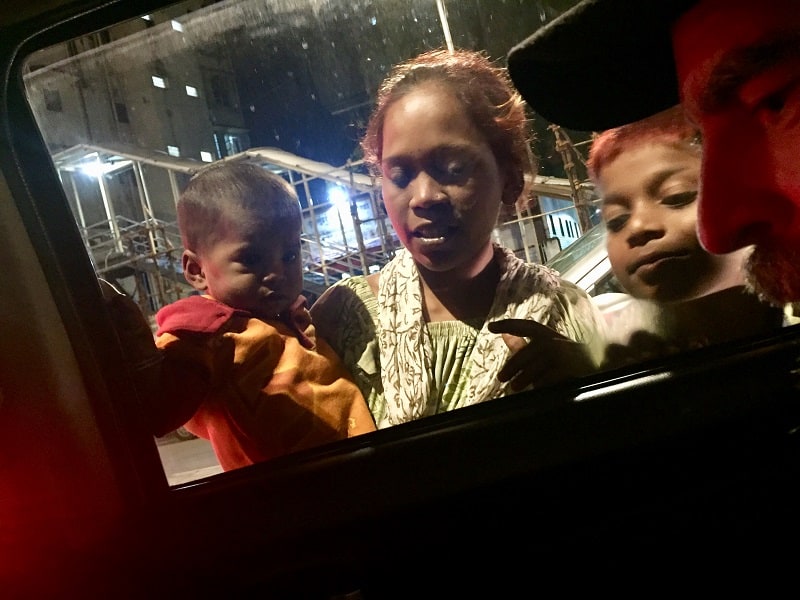
We almost never give to street beggars. There are many people who ask us for help– people we know through our various travels over the years. If we gave away money to the street beggars, we wouldn’t be able to help the people we know. And to be sure: I wish we could help everyone. We simply cannot.
If you look up from Mumbai streets, you’ll see an endless skyline of high rises. A billionaire built one of them, and the entire building is his private home. It’s a 27 floor residential sky scrapper that cost an estimated $1 billion to build.
One of India’s wealthiest businessmen built it. In a media interview, his wife shared details about the extraordinary fixtures and luxurious space. She stressed (so you won’t think her family too privileged) that when her children are on college breaks from school in the USA, she makes them clean their rooms.
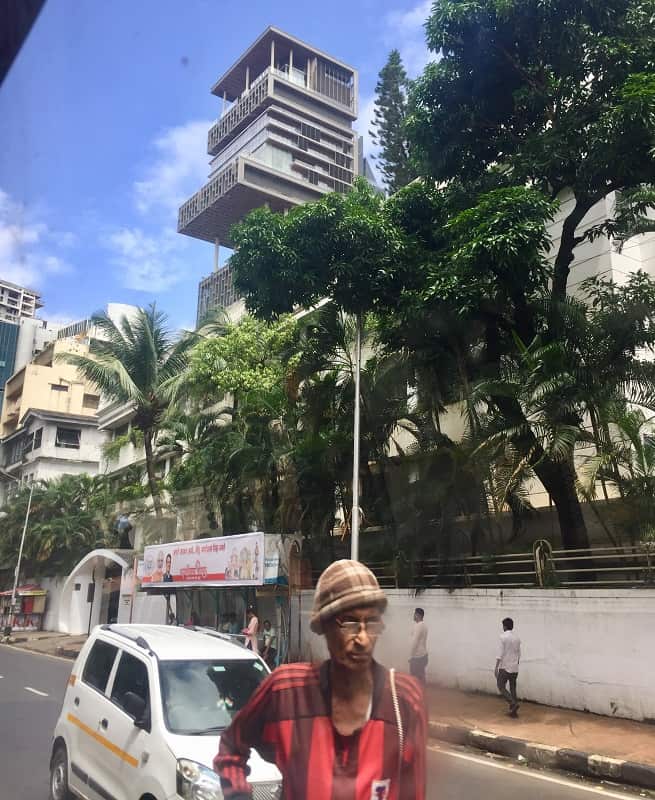
Look back down from her palatial residence, and you’ll see people without any rooms. They live in open spaces with a tarp – if they are lucky – to block out the rain and sun, and to give a bit of privacy, meager as it is.
Look down the road from where you are standing, and you might see cows meandering down a sidewalk. In Mumbai — a city with millions of people (exactly how many millions is debatable, since there hasn’t been a published census since 2011) — there are still places to see cows ruling the sidewalks and sides of roads. You might also see signs warning you against harming stray cats and dogs in any way. Cruelty to street animals is a crime in Mumbai. The signs don’t include children, and I’m not sure why not.
Our free guide about slow travel in India can help get you quickly acclimated to this wondrous country.
Read this before you visit the subcontinent.
In the same neighborhood, you might see a mosque, a Hindu and/or Buddhist temple, a Christian church. In one section of the city, only Parsi people are allowed onto a large chunk of private property, where they have their own strange religious rituals.
Do a 360-degree turn and you’ll see businesses of every sort all around you in this capitalistic democracy. Restaurants. Cafes. Flower shops. Clothing stores. Convenience stores. Laundry services. Ice cream parlors. Sporting goods stores. And then, in the middle of all of this, you might catch the whiff of a public bathroom down the block.
Taxis are everywhere in Mumbai. Tuktuks are only in certain sections. Cars and trucks and scooters whizz by men pushing wheelbarrows full of whatever.
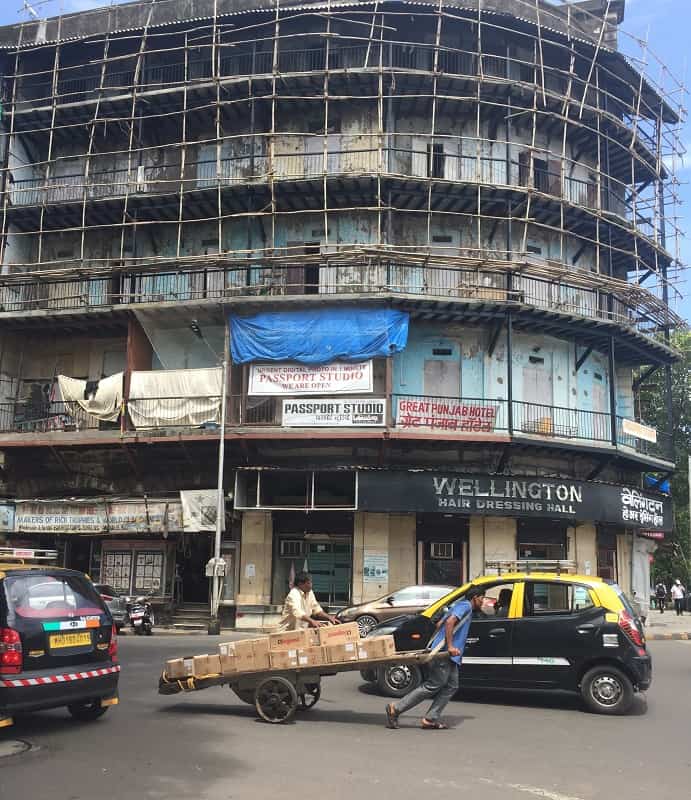
Sometimes people carry whatever they’re hauling on their heads, like the man who carried our cotton-stuffed mattress tops to our Airbnb rental, which had a hard-as-a-brick bed. (The single-sized tops cost $15 to push together on our full-size bed, and we tipped the delivery man $1.40 – and he was delighted over it.)
At tourist hot spots, men try to sell special tour packages to make a buck, if that. Other men carry cameras around their necks and hold laminated photographs to lure you into a buying a professional shot – even though everyone now has cell phones. I don’t think I saw a single person buy a single photography session from any of the men. Giant balloons are another item for sale – but what on Earth would we ever do with that? “For your children,” one man called out to Theo.
Head to the waterfront on Marine Drive or the Bandra walkway or Juhu Beach and you’ll see plastic trash everywhere. It’s in all the slums, it’s on the sides of the roads, it’s on the waterfront as the tide comes in and goes out, comes in and goes out.
And rats! Rats are everywhere, too. They are bold animals that come out in the daytime. Roaches and ‘house crows’ are problems too. We saw so many roaches during our stay, it was, quite frankly, disgusting. And there are so many large Asian crows that at times I was a little freaked out, thinking of Alfred Hitchcock’s “The Birds.”
A friend didn’t understand why we’d want to spend a few weeks in Mega-Mumbai when the Indian countryside and smaller cities are much more ‘pleasant’. Because, well, why not? Why not experience what it’s like for so many millions of people? Why not check out India’s cross between New York City and Los Angeles? If I was in the USA, I would visit those cities, too.
Indians in Mumbai mostly made us feel very welcome. One young man even came up to us and shook Theo’s hand with this message: “Welcome to India!”
We hardly saw any Caucasians. Not as many travelers in the COVID era yet, I guess. We have many photographs with strangers who asked us to take our pictures with them. Not only men – but also women. In fact, I am often asked by women, and that’s contrary to what a Facebook group for expats told me to expect. Jaded expats warned men would brag I was their ‘girlfriend’ if I posed with them. Kind of ridiculous, really, because I’m 51 years old and Theo is always with me.
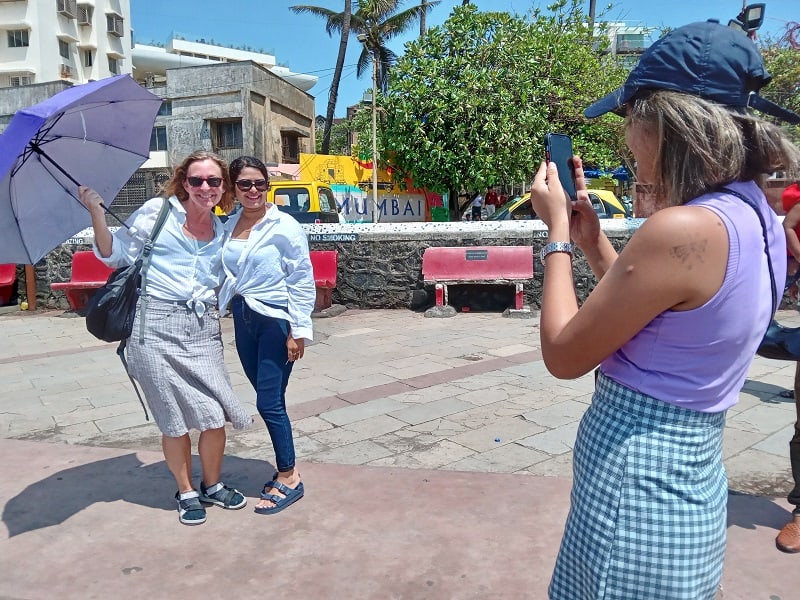
Instead, we have found people surprised by us – and happy to see us.
Once I followed the sound of drums down a path through some bushes near a park by a slum, and came across a bunch of kids practicing for the Ganesh Chaturthi festival. I danced a bit and Theo and I had fun goofing around with them for a few minutes. Because… well, why not? The absolute last thing those kids expected to see was me appear – a middle-aged Caucasian woman. And they sure didn’t expect me to dance with them!
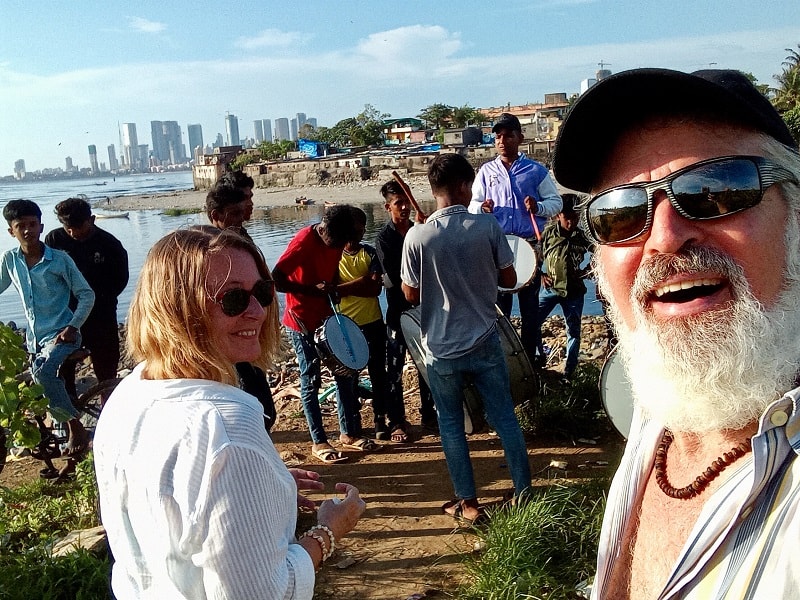
So what can I say to my friend? Mumbai isn’t forever. It’s for a few weeks. Part of why I travel is to see where other people live, and experience how they live. In Mumbai, I’ve experienced a bit of the contradiction that makes India’s heart beat. As Theo already wrote: this experience in a new place made me feel alive.
Having now seen Mumbai and its mega-ness, its extreme contradictions, and its own special pulse, I cannot say I’m compelled to return, but I’m not opposed to it, either. I’ll just wait and see what’s next on Life’s journey.
Thanks for reading “Extreme contradictions in Mumbai – travel notes.”
Other posts about India:

